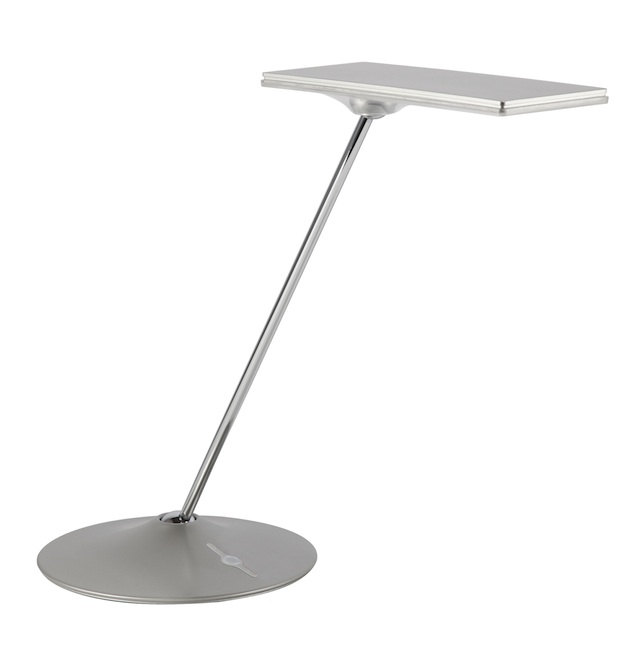Q&A: Robert King, CEO and founder, Humanscale

 Since it was founded in 1983, furniture maker Humanscale has garnered numerous design awards and media accolades for its inventive approach to creating truly simple, yet high performing, chairs, lights, and other office tools. The company's mission is to keep ergonomics top of mind, yet create streamlined, easy-to-use goods. Their workspace gear is fashioned with minimal parts, as Humanscale's designers leverage and balance the use of both basic physics and new technologies to achieve such a product strategy.
Since it was founded in 1983, furniture maker Humanscale has garnered numerous design awards and media accolades for its inventive approach to creating truly simple, yet high performing, chairs, lights, and other office tools. The company's mission is to keep ergonomics top of mind, yet create streamlined, easy-to-use goods. Their workspace gear is fashioned with minimal parts, as Humanscale's designers leverage and balance the use of both basic physics and new technologies to achieve such a product strategy.
One of Humanscale's greatest hits, for instance, is the Freedom Chair. Developed by revered designer Niels Diffrient in the 1990s, it's an office seat that relies on a user's weight, rather than a complicated engineering system of knobs and levers, to adjust. More recently, the 99% recyclable Horizon task light has been winning design awards for its sleek lines and its incorporation of Thin Film LED technology. According to the company, the Horizon uses a mere nine watts of power and is rated for up to 50,000 hours of use--which translates to about 25 years (for single-shift working environments). Since its debut at 2010's NeoCon, an annual furniture trade show in Chicago, the Horizon lamp has won a number of recognitions, including a prestigious Red Dot Award for product design.
I caught up with Humanscale's New York-based founder and chief executive, Robert King, to discuss design's value in terms of developing healthier and more environmentally responsible work environments, among other topics.
Here's our exchange:

SmartPlanet: Humanscale's Horizon task light has gotten rave reviews for its use of nanotech and elegant aesthetics. What value does design play in educating people about the capabilities of emerging technologies, as well as ergonomics and sustainability?
Robert King: Without a doubt, good design should visually communicate the innovation, functionality and new technology within a product, not only to help potential customers understand the technology—or at least believe that the product is next-generation—but also more directly, so the design can be an honest expression of that technology.
The design of our new Horizon task light, for example, is the result of the cutting-edge LED technology within the head of the light. When you allow the innovation and technology within a product to dictate the resulting form, you help maximize the value of its design.
SP: How often does Humanscale's research in the arena of healthcare design cross over into more ergonomic office design—and vice versa?
RK:The truth is, our work on new products for the office informs our work on healthcare products. And our work on healthcare products informs our work for the office. That's because no matter where people access technology and work on computers, whether in a corporate office, exam room, home office or nursing station, the challenges are the same. Quite simply, the relationship between the human body, the keyboard or mouse and the display is universal.
SP: Part of Humanscale’s design philosophy is to create products that are "simple." Can you explain how you arrived at such a mission?
RK: Our first major product that embodied simplicity of design was an articulating keyboard support we developed in the late 90s. But the importance of simplicity in design was really driven home to me when we began looking at task seating.
That's because the best chairs of the day were far too complicated for an average user to understand, or benefit from. At that point, simplicity in design truly became my mission.
Around that time, I was incredibly fortunate to meet Niels Diffrient when he was close to finishing the design of what ended up becoming our first entry into the task seating market–-the Freedom chair. Freedom was, by far, the simplest high-performance task chair ever created. In Freedom, Niels removed the complex and part-intensive spring-tension mechanism found on all chairs and replaced it with the user's body weight and the laws of physics. The result is a chair that is better for the user since it accommodates them automatically, and better for the environment since it uses fewer parts and less material.
Creating something new and innovative, like Freedom, is hard work. And development takes a lot longer than that of traditional products. But the benefits clearly outweigh the effort and the risks. I believe that as the world gets more complicated, it's critical that the products in our lives be easier to use.
SP: Humanscale has pioneered ergonomic keyboard accessories and office chairs. With office technology changing—companies using tablet computers, more workers using mobile phones—can you discuss what new design challenges Humanscale's engineers and designers are tackling today?
RK: We are constantly looking at how technology will change the way we work, and how Humanscale can help ensure that health and comfort are maintained when it comes to the work of the future. In terms of tablets and mobile technology, the truth is, our existing solutions accommodate this technology quite well. Sit back in a Freedom chair, let your neck be nestled by Freedom's headrest, move the armrests up or down to support your elbows, arms and shoulders comfortably, kick your heels up on a nearby Saddle seat, and you're good to go.
Images: Humanscale
This post was originally published on Smartplanet.com